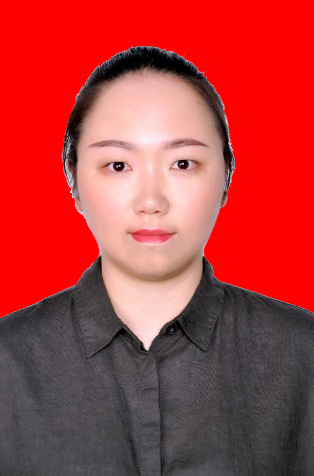
Ding Yuduan
 Dr. Ding Yuduan
Dr. Ding Yuduan
Associate Professor. Ding Yuduan
College of Horticulture
Northwest A&F University
Yangling, Shaanxi, 712100
China
Email: dingyuduan@nwafu.edu.cn
General information:
Ding Yuduan, female, born in Wuhan, Hubei Province in December 1985. Doctor, Associate Professor. in the physiological mechanism of postharvest senescence of fruit.
Education and experience:
1. 2004.9-2008.6 bachelor's degree, Horticulture Dept., Huazhong Agricultural University, majoring in Landscape Architecture;
2. 2008.9-2015.6, Ph.D. in Agronomy at Huazhong Agricultural University, majoring Postharvest Biotechnology.
3. 2015.7-2018.11, Postdoctoral Associate at the Biology Postdoctoral Research Station of Huazhong Agricultural University.
4. 2018.12-Present, associate professor in the postharvest research office, College of Horticulture, Northwest A&F University.
Publications:
1.Chang J#, Zhou Y, Qamar M, Chen LL, Ding Y*. Prediction of Protein-Protein Interactions by Evidence Combining Methods. Int. J. Mol. Sci. 2016, 17(11).
2.Ding Y#, Li H, Chen LL*, Xie KB*. Recent Advances in Genome Editing Using CRISPR/Cas9. Front Plant Sci, 2016, 7:703.
3.Ding Y#, Chang J, Ma Q, Chen L, Liu S, Jin S, Han J, Xu R, Zhu A, Guo J, Luo Y, Xu J, Xu Q, Zeng Y, Deng X, Cheng Y*. Network analysis of postharvest senescence process in citrus fruits revealed by transcriptomic and metabolomic profiling. Plant Physiol, 2015, 168:357-376.
4.Ding Y#, Chang J#, Guo J, Chen D, Li S, Xu Q, Deng X, Cheng YJ*, Chen L*. Prediction and functional analysis of the sweet orange protein-protein interaction network. BMC Plant Biol, 2014, 14:213.
5.Chang JW#, Ding Y, Tahir Ul Qamar M, Shen Y, Gao J, Chen LL. A deep learning model based on sparse auto-encoder for prioritizing cancer-related genes and drug target combinations. Carcinogenesis, 2019,10.1093.
6.He Y#, Han J, Liu R, Ding Y, Wang J, Sun L, Yang X, Zeng Y, Wen W, Xu J, Cheng Y*. Integrated transcriptomic and metabolomic analyses of a wax deficient citrus mutant exhibiting jasmonic acid-mediated defense against fungal pathogens. Horticulture Research 2018, 5(1):43.
7.Song J#, Lei Y, Shu C, Ding Y, Xing F, Liu H, Wang J, Xie W, Zhang J*, Chen LL*. Rice Information GateWay (RIGW): A Comprehensive Bioinformatics Platform for Indica Rice Genomes. Molecular Plant. 2017. doi: 10.1016/j.molp.2017.10.003.
8.Liu H#, Ding Y, Zhou Y, Jin W, Xie K*, Chen LL*: CRISPR-P 2.0: An Improved CRISPR-Cas9 Tool for Genome Editing in Plants. Molecular plant 2017, 10(3):530-532.
9.Cao H#, Wang J, Dong X, Han Y, Ma Q, Ding Y, Zhao F, Zhang J, Chen H, Xu Q, Xu J, Deng X*. Carotenoid accumulation affects redox status, starch metabolism, and flavonoid/anthocyanin accumulation in citrus. BMC Plant Biol, 2015, 15.
10.Ma Q#, Ding Y, Chang J, Sun X, Zhang L, Wei Q, Cheng Y, Chen L, Xu J, Deng X*. Comprehensive insights on how 2,4-dichlorophenoxyacetic acid retards senescence in post-harvest citrus fruits using transcriptomic and proteomic approaches. J Exp Bot, 2014, 65:61-74.
11.Zeng Y#, Pan Z, Wang L, Ding Y, Xu Q, Xiao S, Deng X*. Phosphoproteomic analysis of chromoplasts from sweet orange during fruit ripening. Physiol Plant, 2014, 150:252-270.
12.Yu K#, Xu Q, Da X, Guo F, Ding Y, Deng X*. Transcriptome changes during fruit development and ripening of sweet orange (Citrus sinensis). BMC Genomics, 2012, 13:10.
13.Yun Z#, Jin S, Ding Y, Wang Z, Gao H, Pan Z, Xu J, Cheng Y, Deng X*. Comparative transcriptomics and proteomics analysis of citrus fruit, to improve understanding of the effect of low temperature on maintaining fruit quality during lengthy post-harvest storage. J Exp Bot, 2012, 63:2873-2893.
14.Zeng Y#, Pan Z, Ding Y, Zhu A, Cao H, Xu Q, Deng X*. A proteomic analysis of the chromoplasts isolated from sweet orange fruits [Citrus sinensis (L.) Osbeck]. J Exp Bot, 2011, 62:5297-5309.
15.Zhu A#, Li W, Ye J, Sun X, Ding Y, Cheng Y, Deng X*. Microarray expression profiling of postharvest Ponkan mandarin (Citrus reticulata) fruit under cold storage reveals regulatory gene candidates and implications on soluble sugars metabolism. J Integr Plant Biol, 2011, 53:358-374.